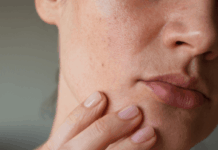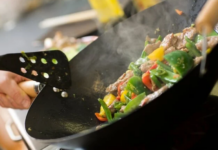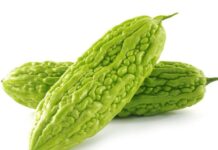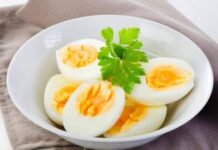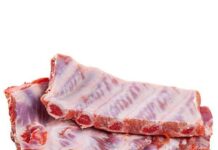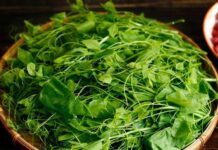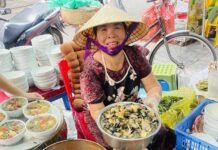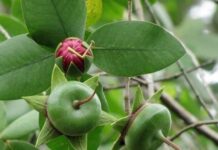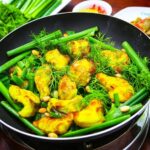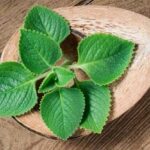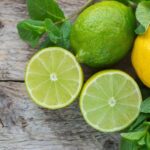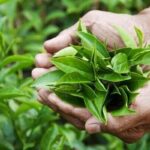Quail may be a common food, but its nutritional value is immense and extremely beneficial for health. For instance, quail eggs are only one-fifth the size of chicken eggs, yet they contain 2.5 times more vitamin A. Quail eggs also boast 2.8 and 2.2 times the amount of vitamins B1 and B2, respectively, compared to chicken eggs. As for quail meat, it is often referred to as “animal ginseng” due to its comprehensive nutritional benefits to the entire body, as opposed to just specific parts.

Both quail and quail eggs are highly nutritious foods. Photo illustration.
According to scientist and polyclinic doctor Bui Dac Sang (from the Vietnam Academy of Science and Technology and the Hanoi Oriental Medicine Association), quail has a sweet taste and a neutral nature. It is known to strengthen the five vital organs, benefit the spleen and stomach, and strengthen the tendons and bones. This food is recommended for those with nervous and physical debility, malnourished children, elderly people with dementia, women who are pregnant or breastfeeding, and individuals recovering from illnesses.
Quail is also believed to tonify the kidneys and strengthen the yang, making it useful for treating back pain and knee weakness. Modern medical research has supported these claims, indicating that quail is suitable for individuals with obesity, diabetes, hypertension, and atherosclerosis. This is due to quail’s high nutritional content (protein and minerals) and low fat levels.

Quail is mainly farmed industrially for its eggs, raising concerns about chemical residues from feed and antibiotics. Photo illustration.
However, to maximize the benefits of quail, Dr. Sang emphasizes the importance of selecting quail from safe sources and adopting appropriate cooking methods. Nowadays, quail is primarily raised for its eggs, with most birds consuming industrial feed. Only after their egg-laying period ends are they sold for meat. Consequently, there is a high risk of chemical residues from antibiotics and feed additives in the quail meat supply.
To ensure the best quality, consumers should opt for quail raised on natural feeds like rice and corn or industrially-raised quail that have undergone a “feed withdrawal” period. This period allows the birds to expel any residual antibiotics before being sold for meat.
PGS.TS Nguyen Duy Thinh, a food technology expert, concurs with this view and adds that, in addition to source and quality, cooking methods are crucial. To maximize the nutritional value of quail, it is best to avoid frying or deep-frying, as these techniques not only dry out the meat but also introduce excessive amounts of oil and fat into the dish.

Roasted quail sold on the sidewalk may pose significant health risks. Photo illustration.
“The quail sold on the sidewalks, if consumed, could potentially cause double harm to health. This is because the source of the quail and the marinating spices may be unclear, and the frying oil may be of unknown origin, reused multiple times, and improperly stored, increasing the risk of bacterial contamination,” warns PGS Thinh.
Depending on the intended use, different cooking methods can be employed for quail meat, but steaming, stewing, stir-frying, or boiling tend to be the best options for retaining the most nutrients.
Here are some quail-based dishes and remedies recommended by Doctor Sang:
– To tonify the spleen and kidneys, nourish the heart, and calm the mind (suitable for individuals with kidney weakness, back pain, knee weakness, tinnitus, insomnia, loss of appetite, anemia, and prolonged coughing): Use two quail, 200g of white radish, cut the quail into pieces, and shred the radish. Stir-fry the quail, then add the radish and stir-fry together. Season with a small amount of wine, vinegar, salt, and ginger-scallion. Simmer until cooked and serve hot.

Quail from safe sources, prepared appropriately, offers numerous health benefits. Photo illustration.
– To strengthen the spleen, eliminate dampness, nourish the skin, and promote appetite and sleep: Use five quail, 50g of coix seeds, 200g of lettuce, an appropriate amount of soy sauce and milk, and ginger-scallion seasoning. Put water, milk, soy sauce, salt, sugar, wine, and ginger-scallion in a pot, bring to a boil, and skim off the foam. Add the quail and simmer until cooked. Pour the sauce over the quail before serving.
– To clear heat and eliminate dampness for individuals with high blood fat, obesity, atherosclerosis, hypertension, diabetes, and elderly people with dementia: Use one quail, 20g of small red beans (Phaseolus angularis), and seasonings. Clean the quail, removing its entrails, and stuff it with red beans. Add just enough water and braise both together. Season with ginger, scallion, and a small amount of salt. Eat one quail a day for two weeks.
– To benefit the qi and blood, treat children with prolonged diarrhea and malnutrition: Use two quail, 50g of Chinese yam, and 100g of rice to make a porridge. Season with ginger and scallion. Serve hot.
“The Wonder Leaf: A Culinary and Medicinal Powerhouse Hiding in Plain Sight”
Studies have shown that basil leaves are a rich source of vitamins A and C, and their essential oil extracts are beneficial for the skin and eyes, as well as effective in treating coughs, colds, and reducing stress.
“Heaven’s Gift” Lies Beneath: A Rainy Delicacy with a Unique Flavor and Digestive Benefits, Priced at 500,000 VND per kg.
The rainy season transforms the mountainous regions as locals venture into the forests to collect wild mushrooms, with the prized egg-yolk mushroom being a sought-after delicacy. With its exquisite flavor and exceptional nutritional value, this unique fungus promises a lucrative income for those who find it.

